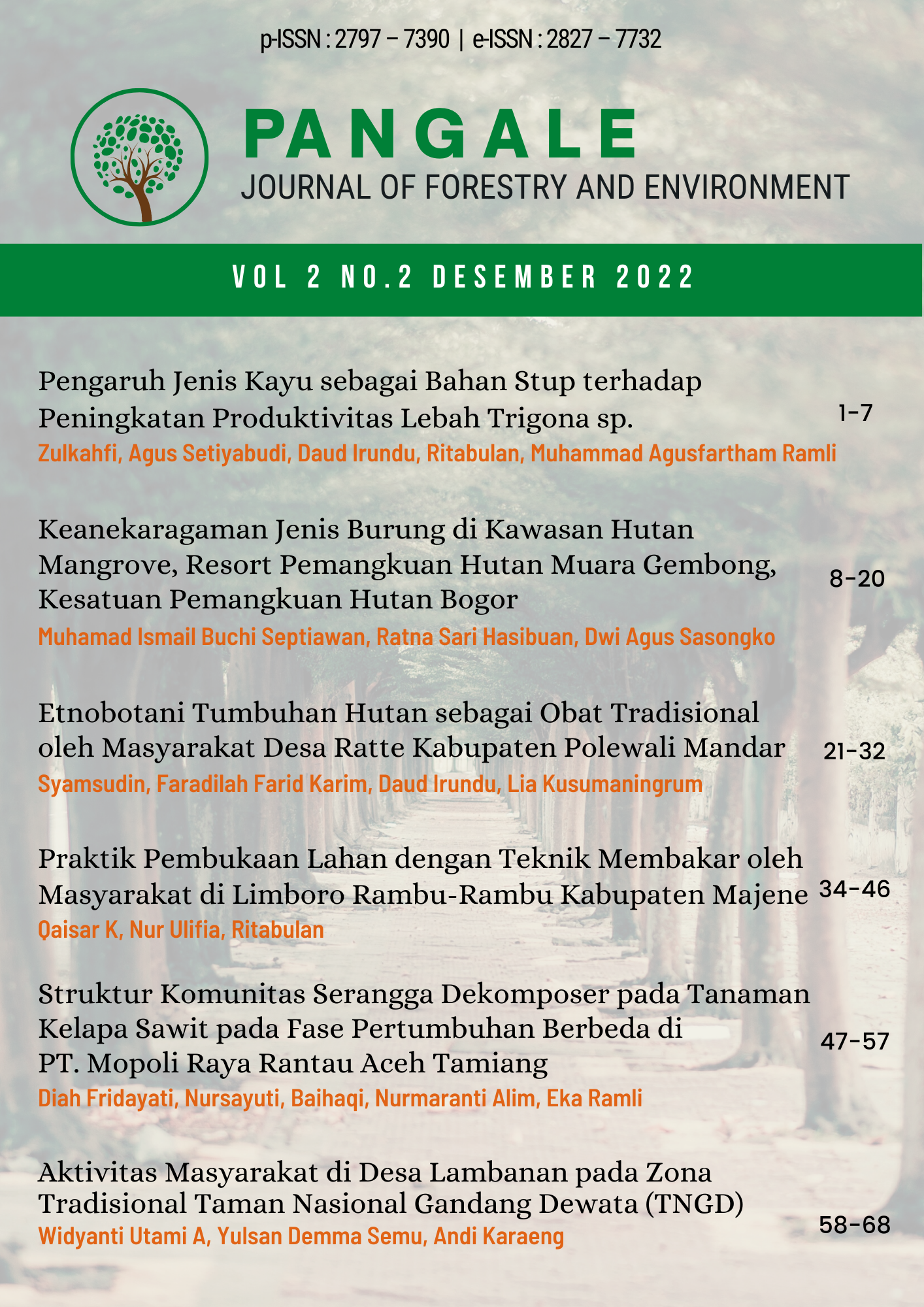Main Article Content
Abstract
Ethnobotany is a scientific study that can explain the knowledge of traditional communities on the use of plants to support their lives. One of them is the potential of forest plants as traditional medicines and their use by the community. It is known that people in Ratte Village, Polewali Mandar Regency, still use forest plants as traditional medicine. This study aims to determine the types of forest plants that have medicinal properties based on local knowledge of the people of Ratte Village. The method used is descriptive exploratory with data collection techniques, namely semi-structured interviews. The data obtained were analyzed qualitatively (types of plants, parts and method of use, as well as use of medicinal plants for types of disease) and quantitative analysis (percentage of use of medicinal plants by the community). The results showed that there were 11 types of medicinal plants used by the community of Ratte Village as traditional medicine, namely Tekelan (Chromolaena odorata L.), Papaya (Carica papaya L.), Ginger (Zingiber officinale), Turmeric (Curcuma longa L.), Guava Seeds (Psidium guajava), Soursop (Annona muricata L.), Basil (Ocimum basilicum L.), Nibung Palm (Oncosperma trigillarium), Betel (Piper betle L.), Balsam-pear (Momordica charantia L.) and Java tea (Orthosiphon stamineus). The Tekelan plant (26%) better known as “Angguni” by local people, is the most widely used species. The part of the plant most often used is the leaf (73%) by boiling it and the drinking it (65%). Diseases that are commonly treated with medicinal plants are diseases that are generally suffered people, such as skin disease, wounds, stomach aches, diarrhea, fever, headaches and toothaches.

